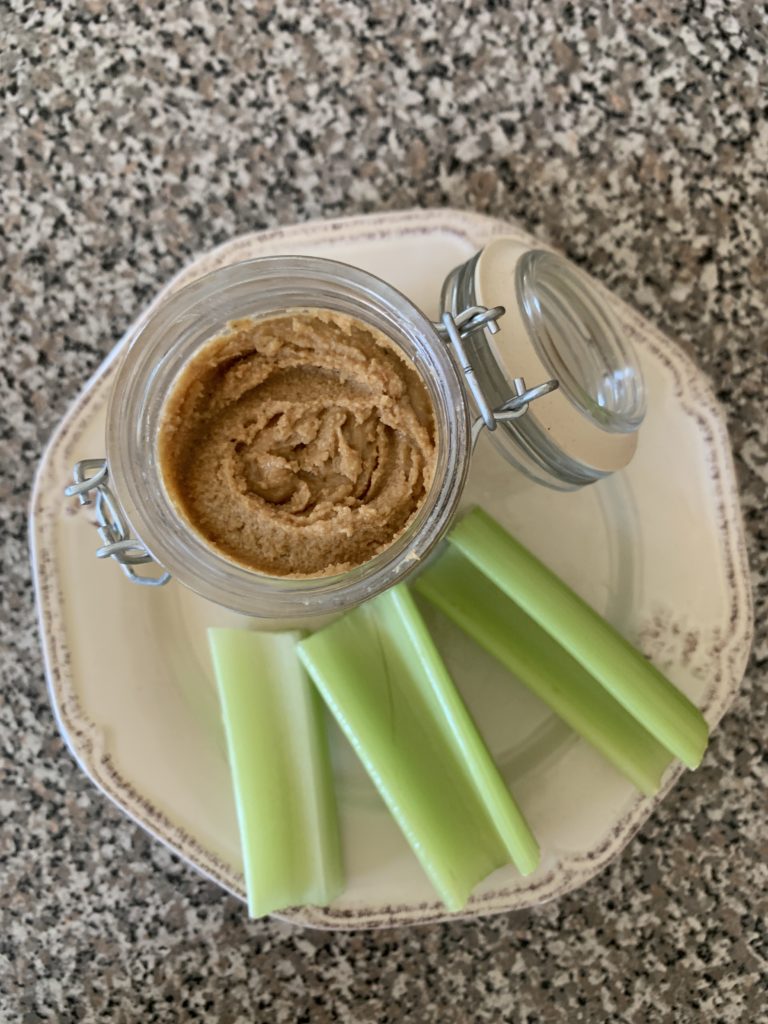It may seem complicated and daunting to make your own nut butter, but we promise it’s so simple you will be wondering why you avoided it for so long. One of the reasons we love making our own, is that you can control exactly what goes into it. So many nut butters are filled with sugar, inflammatory fats like sunflower/safflower oil and preservatives. Why not experiment with making your own? You’ll have the satisfaction of making something delicious and healthful from scratch. Trust us, getting in your kitchen and making your own food from raw ingredients feels so good.
All you need to make nut butter is..really just the nuts. Yep, that’s it! If you want to add salt or other sweetness like honey you are more than welcome, as it works as a nice emulsifying agent. While the delicious oils contained in the nuts themselves do most of the work, we recommend adding 2-3 tablespoons of coconut or grape seed oil to make your nut butter really creamy. You might choose to do this anyways depending on the consistency of your nut butter! You’ll also want to have a powerful, high speed blender or food processor on hand for this. Store your home made nut butter in the fridge – remember, it has no added preservatives! We used cashews in the picture, but feel free to use any nut you like! Home made nut butters are an awesome way to cut down on eating packaged and processed foods. Nuts are amazing sources of minerals like zinc, selenium, copper, magnesium and manganese and healthy fats, so we definitely recommend consuming them in whole form as well as making your own butters.
What you need per 1 cup of nut butter:
2 cups raw nuts (no skins)
2-3 T grape seed or liquid coconut oil (choose neutral tasting coconut oil unless you want a coconut flavor)
2 T honey (if sweetness desired)
Salt to taste
What to do:
Roast raw nuts at 325 degrees for 10 minutes on a parchment lined baking sheet to help release natural oils. Add nuts to a high speed blender and blend in 5 minute intervals for about 10-15 minutes, allowing the machine to cool down if it gets too hot between intervals. Add the oil and honey if desired as you go. Scrape down the sides of the blender or processor as needed in between blending intervals. Add salt to taste last and give a final blend. Nut butter should be creamy, not runny but not as thick as a cookie dough. Scoop nut butter into a jar with a lid (a jelly jar or mason jar works well). It will keep for months in the refrigerator. If thicker than desired after refrigeration, let come to room temperature before consuming. You can keep nut butters at room temperature, but we recommend consuming them within a week to avoid any concerns with rancidity of oils.
**Note: All nuts are different, so the amount of oil you need may differ with each batch. Add the oil 1 T at at a time, then add the honey 1 T at a time, tasting as you go.



